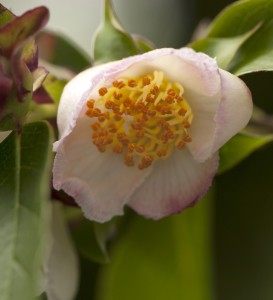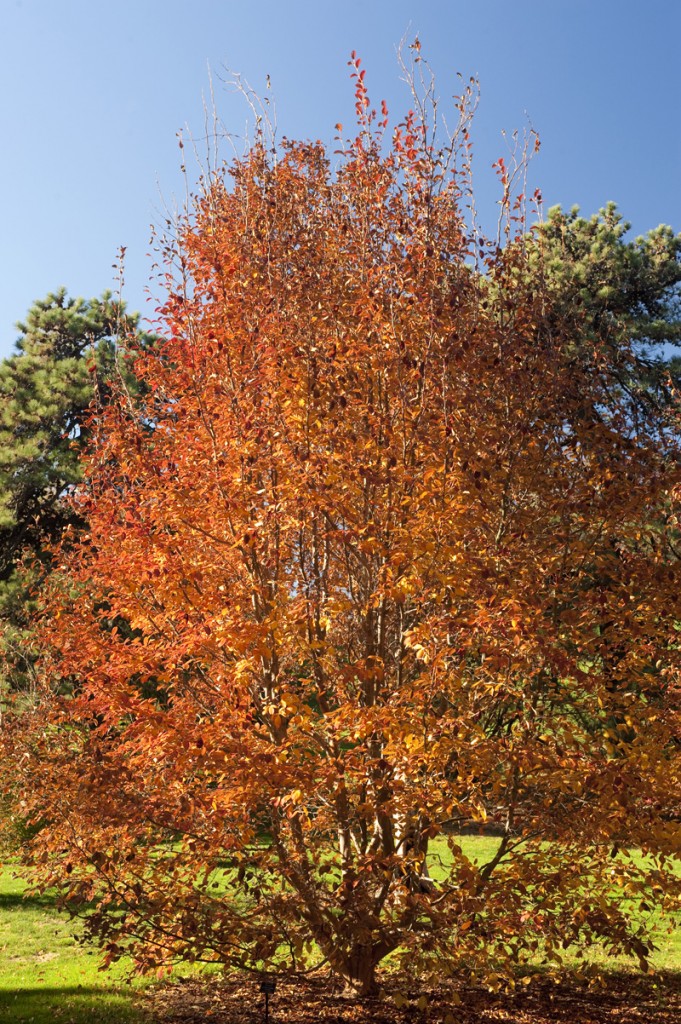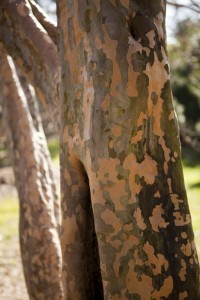Gems of Summer: Stewartia
Posted in Around the Garden on June 11 2014, by Jaime Morin
Jaime Morin is The New York Botanical Garden’s Assistant Curator in horticulture. She works with the plant records and curation teams to help keep the garden’s information on its living collections up to date. She also oversees the details of the garden’s Living Collections Phenology Project.

Ever since my journey into the world of plant obsession began, one my favorite times of the year has always been what I affectionately call “Stewartia season.” This delightful stretch always reminds me of summers spent immersed in unique plant collections, but always being drawn back to this one fascinating group of plants.
The genus Stewartia contains a handful of large shrub and tree species native to eastern Asia and two indigenous to the southeastern United States. Stewartia species all have beautiful white flowers with an obvious tuft of anthers in their center. Their floral show takes place in early to mid-summer, but many species also put on a fantastic display of orange to crimson fall foliage, extending the plants’ season of interest.

Right now the Stewartia rostrata are just finishing up their display of cream flowers brushed in pale pink. Soon our collection of Japanese stewartia (Stewartia pseudocamellia) at the north end of the Ross Conifer Arboretum will begin their mid-summer spectacle. Some seasons these plants bloom so prolifically that their branches sag underneath the sheer weight of the flowers. If you stand still enough you can usually hear the trees come alive, buzzing with pollinators.
As if this species weren’t gorgeous enough, once its flowers fade and its blaze of fall color finishes, the leaves drop to reveal smooth, exfoliating bark and graceful tiers of branches that add textural and architectural interests all winter long. Some of our oldest specimens of S. pseudocamellia hail from a 1940 accession of 12 plants from Hicks Nurseries, three of which are still alive nearly 55 years later.

Stewartia are generally happiest in rich, organic, well-drained soil sited somewhere with full sun to part shade. Plants given more sun will typically produce more flowers. Depending on the species, Stewartia can range in habit from large shrubs (S. malacodendron tops out at roughly 15 feet) to large specimen trees like S. pseudocamellia or S. monodelpha that can reach up to 40 feet in height.
Stewartia make wonderful collector’s items and should be cherished for their remarkable multi-season beauty. Our collection of specimen plants, as well as our individuals dotted throughout the Rock Garden, Ladies’ Border, and Native Plant Garden are certainly worth a visit. I know that I always take a few moments every week to pass by and admire these inspiring plants.

